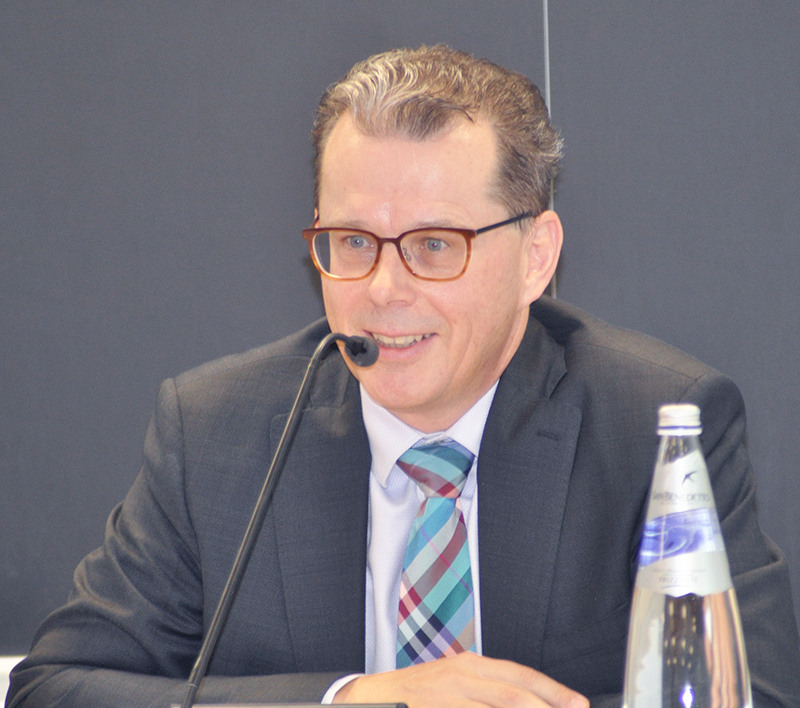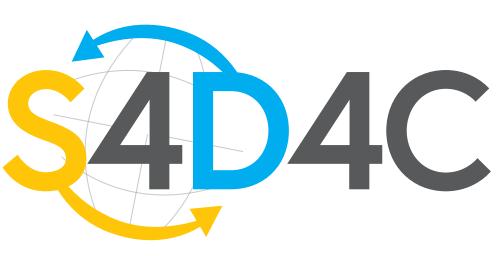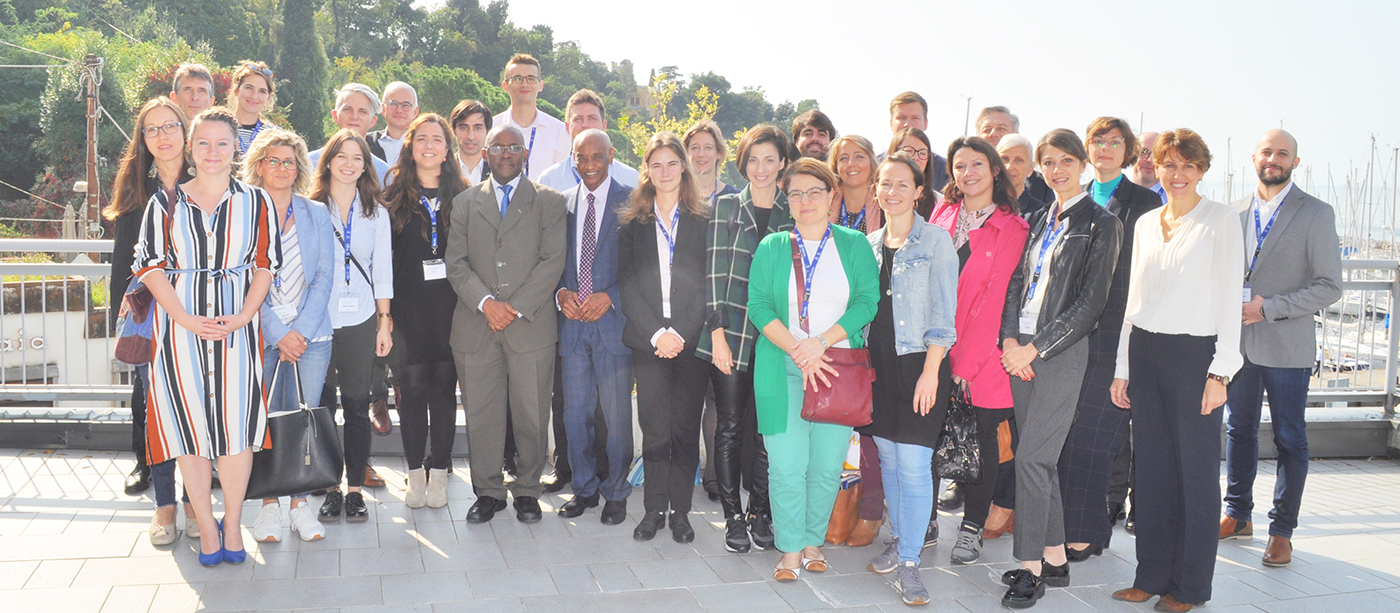 In international relations, politics typically come first, and science follows behind. But according to experienced diplomat Clemens Mantl, successful diplomacy in the future will require an in-depth understanding of how science and technology are transforming the way foreign politics work.
In international relations, politics typically come first, and science follows behind. But according to experienced diplomat Clemens Mantl, successful diplomacy in the future will require an in-depth understanding of how science and technology are transforming the way foreign politics work.
That's the essential character needed for science diplomacy in the 21st century, said Mantl, the consul general of the Republic of Austria in Milan. Mantl was also the director of the Office of Science and Technology Austria (OSTA) in Washington D.C. for four years and served as the director of the Austrian Cultural Forums in Teheran, Iran, and in Cairo, Egypt, as well as in the Austrian embassies in Belgrade, Damascus and Prague.
Speaking on the opening day of the S4D4C science diplomacy workshop, titled "Science meets Diplomacy: a new European perspective", Mantl offered an interpretation of science diplomacy that he called atypical for a diplomat. Networking is a diplomat’s bread and butter, he explained. Yet now, networking has become a science in itself. This is where science diplomacy can achieve something new – it is in a unique position to apply the science of networking to the core of diplomatic work itself.
“Diplomats are bureaucrats, but there are quite a bunch of similarities with scientists,” Mantl said. “We both are, in a way, investigators. We both try to find solutions to fundamental problems of our societies – and, whatever we do at the end there has to be a paper. Eventually, with our papers at hand, both of us struggle to get our message across to the public.”
 This was the first S4D4C Science Diplomacy Workshop, held in Trieste, Italy, from 21-23 October and hosted by TWAS, a partner in the S4D4C consortium.
This was the first S4D4C Science Diplomacy Workshop, held in Trieste, Italy, from 21-23 October and hosted by TWAS, a partner in the S4D4C consortium.
S4D4C – which stands for Using Science for/in Diplomacy for Addressing Societal Challenges – works to support European science diplomacy, European Union foreign policy goals and especially the development of solutions for global challenges.
The Trieste workshop drew over 30 speakers and participants from over a dozen countries – mostly from EU Member States – but also from Russia, Algeria and Ukraine. A second workshop will take place in Vienna, Austria, from 25-27 November.
The workshops are designed for scientists, diplomats, policymakers and other experts in fields where science, technology and foreign policy intersect. The workshops use lectures, panels and interactive events such as role-playing simulations to build important skills and establish a community around science diplomacy that grows beyond the workshops.
"Understanding the whole"
Mantl has direct experience in network-building. He was director of OSTA for four years, and during that time he managed the Research and Innovation Network Austria (RINA), an institution through which diplomats and others could tap the expertise of 3,000 Austrian scientists in the U.S. and Canada.
Mantl compared traditional diplomacy to a messy network of wires interwoven and linked up with one another. He said these wires tend to complicate the work of diplomacy, sometimes causing diplomats to lose focus on national interests and instead to focus disproportionately on the tools of their trade, such as the use of soft power and various subcategories of expertise.
The result of the complexity is that various means of achieving diplomatic ends become siloed into categories of specialists – for example: economics, sports, culture and science.
 As an example, he said that during the time he was involved in cultural diplomacy he would advocate for how the arts can unite people across differences. But sometimes he and his colleagues would over-focus on culture – the tool they were using – and lose sight of the solution to the problem or the national interests they were supposed to pursue. The truth, in culture, is that there are also elements of exclusion rather than connection-building, but the fixation on culture that was part of the culture diplomacy scene became more important than understanding that complication.
As an example, he said that during the time he was involved in cultural diplomacy he would advocate for how the arts can unite people across differences. But sometimes he and his colleagues would over-focus on culture – the tool they were using – and lose sight of the solution to the problem or the national interests they were supposed to pursue. The truth, in culture, is that there are also elements of exclusion rather than connection-building, but the fixation on culture that was part of the culture diplomacy scene became more important than understanding that complication.
“This kind of understanding of wielding power diverted the focus from diplomacy to its instruments,” he said. “For many diplomats, science is a tool and scientists are perfect agents of cooperation in bilateral relations. They can play this role even independently from their readiness to explicitly act on behalf of their country.”
The way to make science diplomacy more effective would be to take an interdisciplinary approach in diplomacy. He advocates for new, integrated teams of diplomats, scientists and other experts. The scientists and experts could provide curricula on science, research, technology and innovation, but it also must include instruction on interdisciplinary competence – skills still largely missing among both scientists and diplomats, and an area where science diplomacy could prove important.
By extension, broadening and improving networks would also pull all the other areas of expertise out of their respective siloes and allow various experts of all kinds to partner with diplomats and each other. He described it as an interdisciplinary approach that is “about understanding the whole.”
This could mean using digitalization, big data and systemic risk analysis to help diplomats network with experts who can help them achieve peaceful solutions to problems.
“There is a clear difference between expert cooperation and political cooperation but yes – of course – they support each other,” he said. “One of the core competences of diplomats in order to act persuasively in their national interest is a high level of intercultural competence and knowledge of networking and connecting.”
Where experts of all sorts, including scientists, struggle with diplomacy is their resistance to compromise. But despite their differences, scientists and diplomats have much in common, after all, so that relationship is an intuitive place to begin. Both scientists and diplomats are results-oriented, and the tendency of science is to include and draw from the work of others, which is different from the sometimes “excluding” tendencies of culture.
“I believe diplomats and scientists are closer to each other [than they are to] artists or entrepreneurs. We wholeheartedly work for the good of society,” he said, and with their help, “we have to leave thematic silos behind. Most of all we need more science in diplomacy. Together we have to figure out the joint value we can add that caters to the real needs of our societies, because the 21st century is about understanding the whole. It is about thinking and acting as a network, hand-in-hand.”
Sean Treacy

